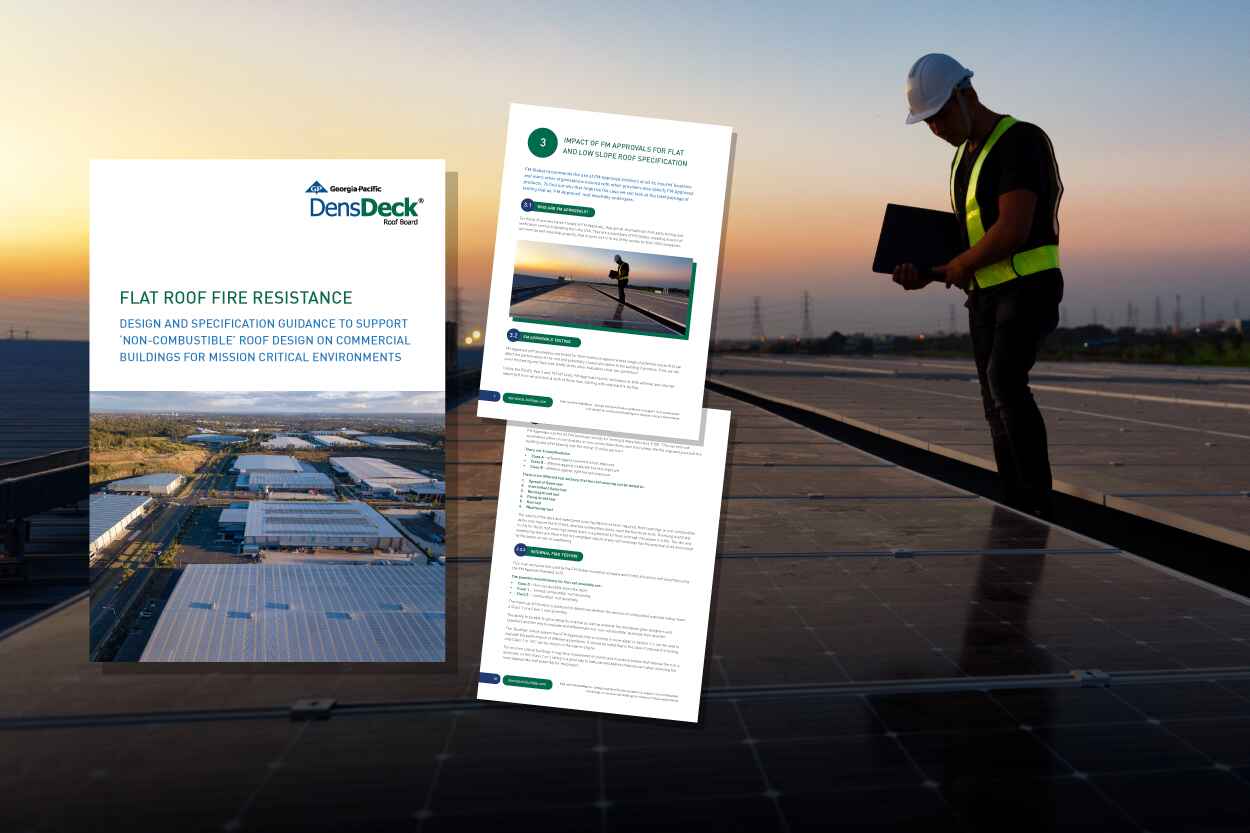The effect of UK regulations when specifying flat roof assemblies with roof cover boards for commercial buildings

The effect of UK regulations when specifying flat roof assemblies with roof cover boards for commercial buildings
The roof installed on a commercial building must meet the requirements of UK and European fire standards. Flat roof cover boards can help to achieve these standards, making their use an attractive option.
Which are the most frequently specified roof cover boards in mission critical buildings?
Roof cover boards are protective boards used in flat and low slope roofs. They are fixed above the insulation and below the waterproofing layer, where they can bring several benefits to the roof assembly. Roof cover boards are compatible with a wide variety of waterproofing layers and can be used above all insulation types.
The cover boards themselves can be made from several materials including wood, such as plywood or OSB; asphalt, perlite, glass or mineral fibre and cement or gypsum. Their composition will affect their performance with respect to fire performance, weather resistance and structural strength.
Two of the most commonly used roof cover boards in mission critical buildings, that must operate 24/7 without interruption, are glass-mat faced gypsum boards and cementitious and they are both classified as non-combustible.
Flat roofs in commercial buildings and fire regulations
Approved Document B (Fire Safety) of the UK Building Regulations requires the following to be true with regard to the ability of a roof to resist the spread of fire: “The roof of the building shall adequately resist the spread of fire over the roof and from one building to another, having regard to the use and position of the building.”
This desire to restrict the spread of fire is reflected in Approved Document B for Wales, Technical Handbook 2: Fire for Scotland and Technical Booklet E for Northern Ireland. Some restrictions apply to separation distances for buildings depending on the external fire classification of flat roofs using the TS1187 classifications. There are also requirements where a roof extends over a compartment wall.
By understanding the requirements of Approved Document B, the designer and specifier can ensure that the performance characteristics of their chosen flat and low slope roof build up comply with the Building Regulations.
There are situations, such as for mission critical buildings, where compliance with building regulations may not be sufficient to adequately protect the building from the disruption to business caused by the outbreak of an external or internal fire. In an external fire situation, the addition of roof cover boards to the roof assembly can enhance fire resistance and bring a host of other benefits that will help to maximise building performance.
DensDeck® Roof Board is a non-combustible, glass mat faced gypsum core board. It is suitable for use in commercial buildings as it can help achieve the required UK and European fire standards as well as meet the requirements of FM approved installations. DensDeck® Roof Board is classified as A1 in accordance with EN 13501-1 and non-combustible as described and tested in accordance with ASTM E136.
To better understand how UK regulations can affect specifying flat roof assemblies with roof cover boards for commercial buildings, you can download our white paper, ‘Flat roof fire protection design and specification, guidance to support non-combustible roof design’, or contact one of our team today who will be happy to help.
Contact Us
Start your project or simply get specification advice by dropping us a message.
One of our team will be in touch as soon as possible.